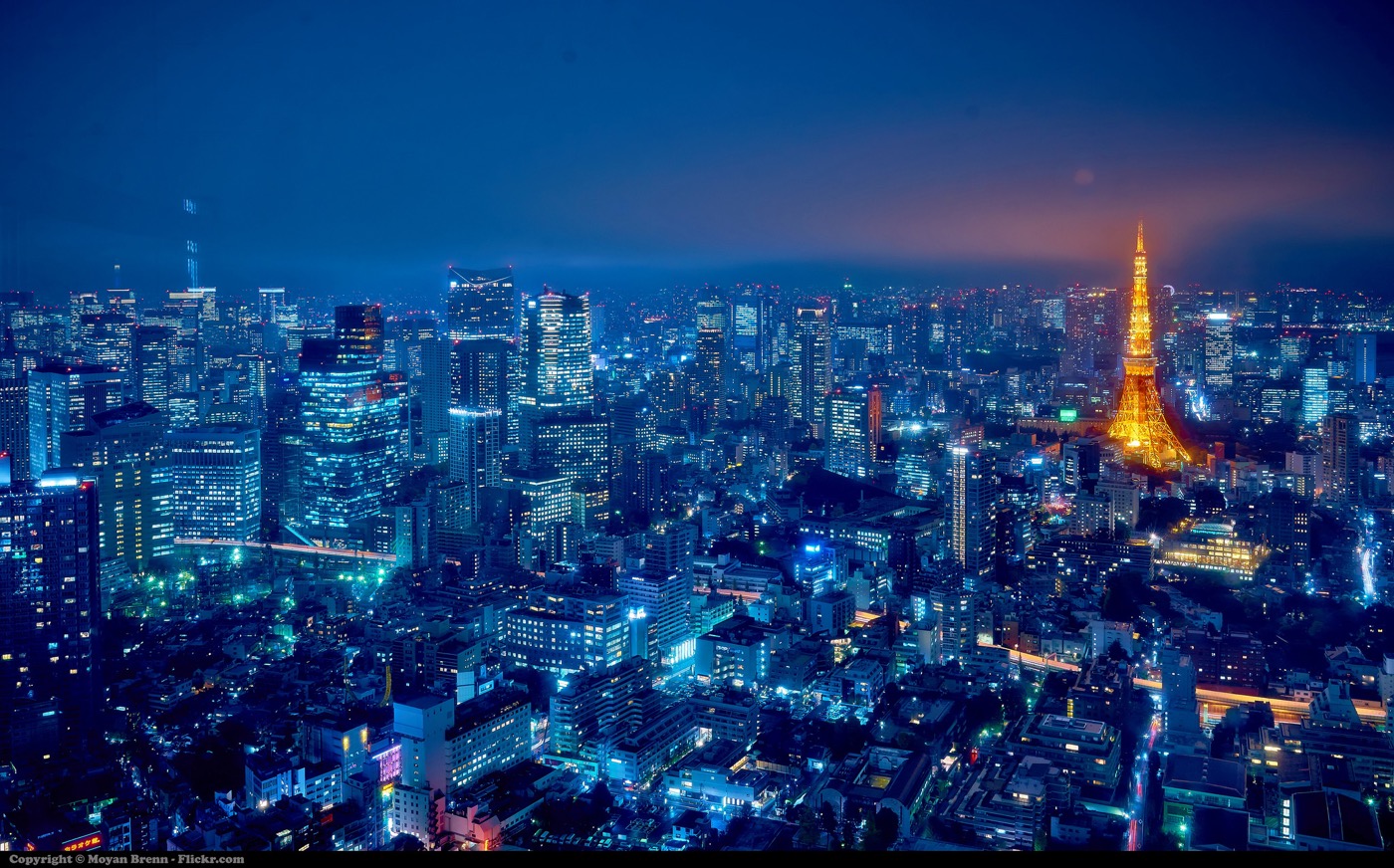Sprawling over 5,200 square miles and with upwards of 35 million residents, greater Tokyo is the world’s largest metropolis. Scores of museums and attractions, parks and gardens, restaurants and nightspots tempt visitors. New attractions, like Tokyo Skytree, the world’s tallest freestanding tower, keep Japan’s capital on the cutting edge. But Tokyo’s frenetic pace, however exciting, can sometimes leave visitors longing for a respite.
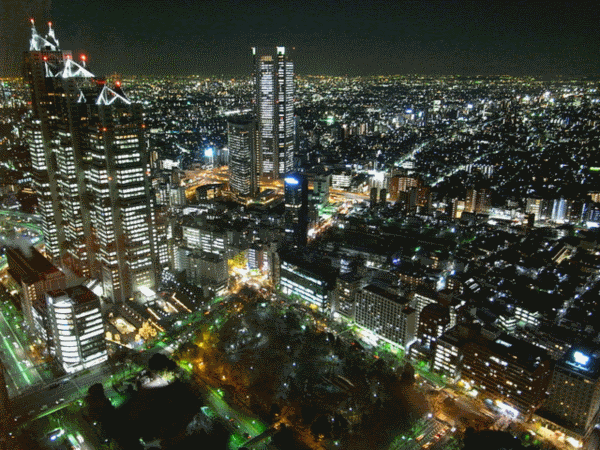
Fortunately, only 1 to 2 hours from central Tokyo lies a peaceful world where cable cars glide gently to mountaintop temples, woodland trails curve among blossoming cherry trees in spring and scarlet Japanese maples in fall, wooden riverboats glide along rock-girt rivers and healing hot springs provide relaxing balm to overworked minds and muscles. Often overlooked by tourists, the world around Tokyo can be easily reached by well-run subway and rail lines.
Begin your explorations in Chiba Prefecture, a peninsula surrounded by Tokyo Bay and the Pacific Ocean, just east of Tokyo and the site of the Tokyo Disney Resort and Narita Airport. Upon arrival at the airport, most visitors hightail it to Tokyo. But consider checking into a hotel there and visiting the traditional sights of Narita-city.
The Marroad International Hotel Narita has 800 well-appointed rooms, two restaurants, the Galaxy bar, and Lumière restaurant, serving Western and Asian dishes. Fitness facilities include an indoor swimming pool, gym, tennis court and a sauna with whirlpool. Once settled, take the Circle Bus, Route B, for a 30-minute ride to Narita-city’s Keisei Narita Station or Naritasan Shinshoji Temple. The hotel offers a free shuttle but frequent stops make the trip twice as long.
Established in the 10th century, the Naritasan Shinshoji Temple is a park-like complex of eight major temples and shrines along with various halls and pagodas. Dedicated to the god Fudomyoo, the Great Main Hall is the site of the daily Goma Rite, or Fire Ritual. Wooden goma sticks are burned around a central altar, with golden chandeliers hung above, as Buddhist priests chant and play enormous taiko, or drums. For a small donation, obtain an amulet for protection, for good luck in school or perhaps a marriage proposal. In Komyodo Hall, romantics burn white candles to propitiate a love god. At the Calligraphy Museum, practice pen-and-ink calligraphy—called shakyo—under a monk’s watchful eyes.
Shops on Omotesando, Narita-city’s long main street, sell all manner of goods, from rice crackers to chopsticks. The Pan-Cha-Ya bakery/café is known for its sweet red bean buns, a local specialty. At Kikuya, a 270-year-old restaurant that catered for Tom Cruise and The Last Samurai crew, enjoy a complete lunch of sashimi, salad, salmon-avocado soup, two panko fried pork cutlets, chicken with lotus root and green chilies, along with unagi, eel on a bed of rice.
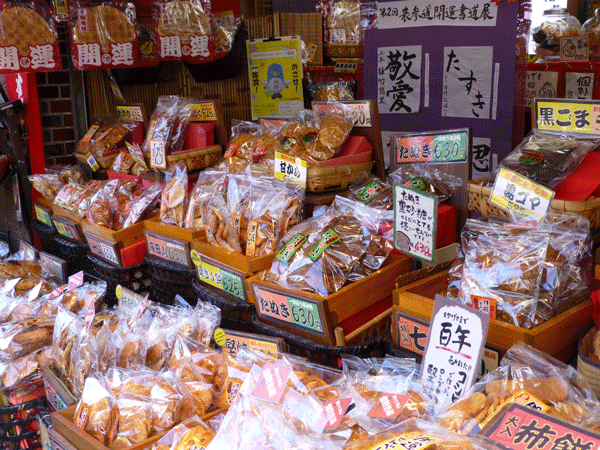
You can overnight at the Marroad International, then head toward Tokyo. But, if you want to decompress, hop JR Narita and Uchibo lines’ trains down Chiba’s west coast to Kisarazu-city and the Ryugujo Spa Hotel Mikazuki, known for its onsen or hot springs. Follow Japanese protocol and strip completely, then wash, before entering the sodium-rich pools which include a circular “river” with waterfall, two dozen Jacuzzi stations and deep gold and silver tubs believed to confer great wealth on bathers.
Overnight there and head next day to scenic Mount Nokogiri, a 1 ½ hour train ride south on the JR Uchibo Line. A red-white-and-blue cable car whisks you up the mountain in 4 minutes, where you’re free to roam trails lined with shallow caves that are filled with thousands of stone statues carved by early Buddhist disciples. On Nokogiri’s east side, contemplate Japan’s largest Buddha, a stone monolith rising 103 feet.
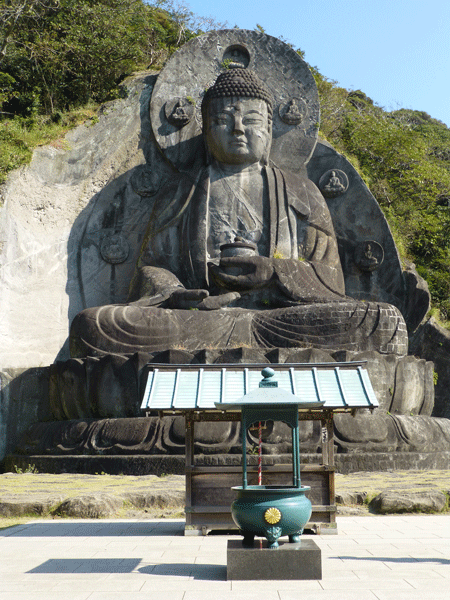
For lunch, take a taxi to one of the area’s many seafood restaurants. A good choice is Banya, where diners feast on enormous platters of sashimi and fried fish plus steaming hot pots filled with shrimp, clams and other seafood delicacies fresh from Tokyo Bay and the Pacific.
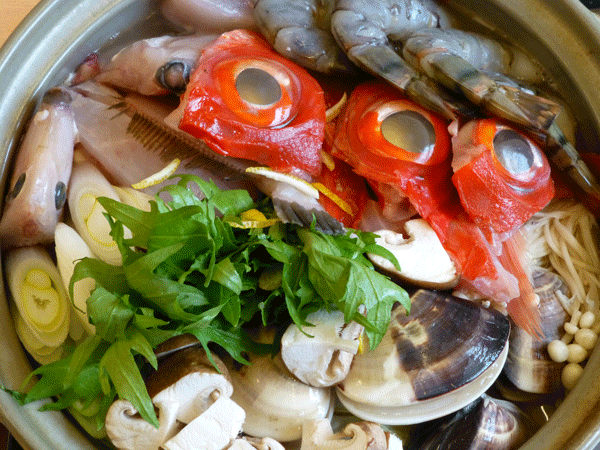
Having at least seen some of the surrounding countryside, make your way to Tokyo aboard a JR Line train or the Tokyo Bay Ferry. Then, take the subway to Shinjuku district on the west side of Japan’s fascinating capital city. A short walk from the JR Shinjuku Station, the deluxe Keio Plaza Hotel has spacious contemporary rooms. Dine at the Keio Plaza or head south to the Minato-ku district and Sushi Gonpachi Nishi-Azabu, a warehouse like restaurant whose innovative take on traditional Japanese cuisine draws a hip young crowd.
Shinjuku has excellent rail connections that link it to Sumida-ku, on the city’s eastern fringe. Opened in May 2012, the top attraction here is the 450 floor Tokyo Skytree, the world’s tallest freestanding tower, with 312 restaurants and shops and glassed-in observation decks. Not far from this modern marvel, the Metropolitan Edo-Tokyo Museum showcases Japan’s prosperous 17th– 19th century Edo Period through multimedia exhibits, intricate scale models and full-size building recreations like the Nakamura Theater. For lunch, stop at Kappo Yoshiba, an authentic sumo wrestlers’ restaurant complete with a training ring. The specialty, chanko nabe, is a huge hot pot filled with pork, chicken, shrimp, salmon, scallops and swordfish balls along with vegetables, noodles, fried tofu and bread like wheat gluten chunks called fu.
Next morning make tracks to Mount Mitake in Tokyo Prefecture’s Ome-city via the JR Ome Line. From Takimoto Station, at the base of Mount Mitake, a bright yellow cable car travels six minutes to Mitake-san Station. From there, follow winding woodland trails or stone staircases to the summit, passing mountainside inns and shade trees with wooden boxes sheltering flying squirrels. At the top, the red and gold Shinto shrine, Musashi Mitake Jinja, is dedicated to the white wolf which may explain why many of the Japanese have their Akitas and Shiba Inus in tow.
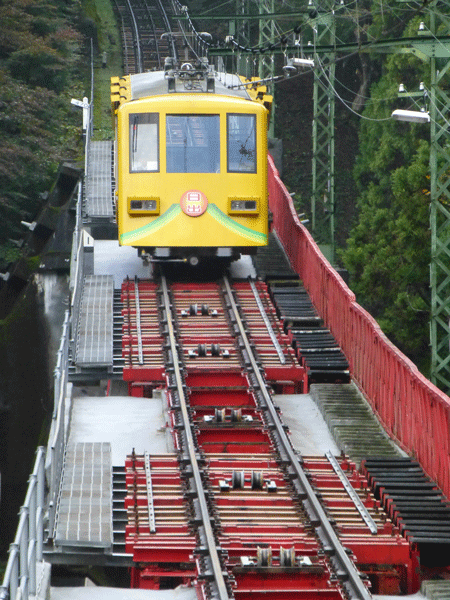
Back down, it’s a 10 minute taxi ride to Mamagoto-ya for a delectable lunch of dishes made entirely from tofu. Then head across the street to the Ozawa Sake Factory to taste the clear rice spirit that researchers claim prevents everything from cancer to osteoporosis. If there’s time, visit the brewery’s Kushi Kanzashi Museum, containing a collection of 5,000 ornamental combs and hairpins, many in gold lacquer or tortoiseshell.
Northwest of Tokyo, in Saitama Prefecture’s Saitama-city, tour the Suzuki Ningyo Atelier and Showroom where artisans painstakingly craft traditional Japanese dolls for girls and bow and arrow sets for boys. The studio also offers Bell’s Kiss, a line of contemporary blond and red headed dolls dressed in contemporary black, white and gold kimonos. While in Saitama-city, browse through the 50 year old Sakae-ya kimono shop, and buy a ready-made kimono. Dinner that night is at Shindo-Yamaya, a traditional ryokan, serving a well prepared variety of banquet dishes. Then check into the elegant Palace Hotel Omiya with its spacious marble columned lobby.
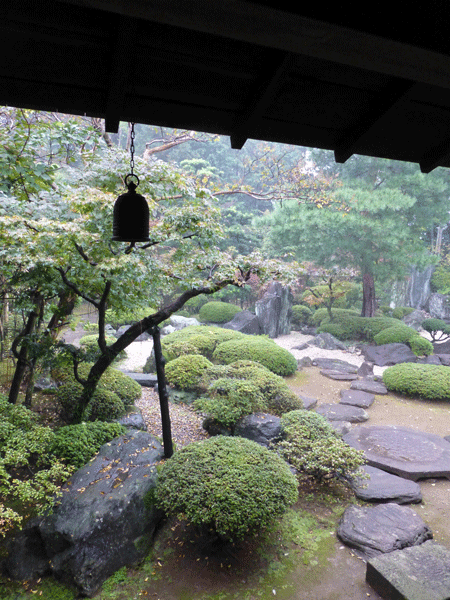
Check out early the next morning and head to Saitama Prefecture’s far west and the town of Nagatoro. There, Nagatoro Rhine Kudari offers thrilling boat trips along the Nagatoro River in traditional long wooden boats. You’ll see the famous Iwadatami, crystalline schist shelves resembling layers of tatami mats. Come autumn, the long gray rocks are dotted with brilliant red and gold fall foliage.
After docking, stroll Nagatoro’s main street, lined with restaurants and shops selling senbei, or rice crackers, and hand-made udon noodles. At the tourist office, rent an electric bike or try the electronic audio-guidance pen that lets you touch a map and hear about local attractions. A short walk away, at Hanamizuki in Chosei-kan ryokan overlooking the river, have a relaxing lunch of sashimi, fried shrimp and bamboo skewered fish.
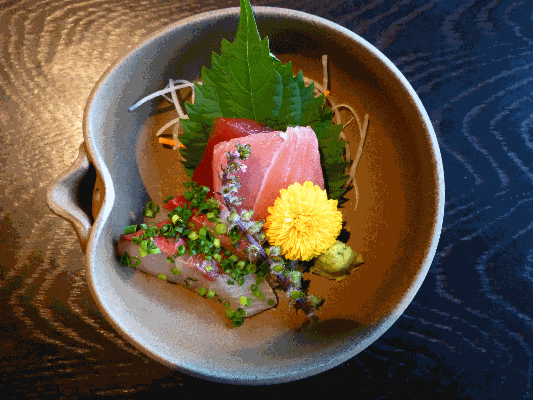
From Nagatoro, backtrack east to the city of Kawagoe whose traditional 18thcentury architecture has earned it the name “Little Edo.” Stop first at Kitain Temple, surrounded by stunning gardens dotted with plum, cherry and maple trees. Then head to Kura no Machi, the Warehouse District, where thick-walled buildings with curved black roof tiles house intriguing shops and boutiques. Visit the Toki no Kane bell tower, built by a 17th century shogun to keep townspeople on time. Not far away, Kashoya-Yokocho, or Penny Candy Alley, is lined with candy making shops, some dating from the early 20th century.
Kawagoe is just north of Tokyo so you can enjoy a farewell dinner at Kappo Fukutomi, washed down with plenty of good sake. Then take a five minute walk to Hon-Kawagoe Station for the hour long trip on the Seibu Shinjuku Line to Seibu-shinjuku Station and a restful overnight at the Keio Plaza Hotel. You’re now back on the western fringes of inner-city Tokyo. After several days soaking away cares in soothing hot springs, climbing woodland trails to peaceful mountain shrines, cruising placid waterways, and sampling fresh culinary delights in traditional restaurants and ryokans, you’re now completely relaxed and ready to tackle the city’s frenzied throngs, from the neon-clad shops of the Ginza to the frenetic nightspots of Roppongi and Shibuya.
The country code for Japan is 81.
Where to Stay:
Marroad International Hotel Narita – Narita’s largest airport hotel has well-appointed rooms and two restaurants. 763-1 Komaino, Narita-shi, Chiba; 286-0121, 0476 (3) 2222. www.marroad.jp
Ryugujo Spa Hotel Mikazuki – Hot springs hotel on Tokyo Bay with deluxe rooms and several restaurants. 1 Kitahama-cho, Kisarazu-city, Chiba; 292-0006, 0438-41-8111. www.mikazuki.co.jp
Keio Plaza Hotel – Contemporary style hotel in Tokyo’s lively Shinjuku district. 2-2-1 Nishi-Shinjuku, Shinjuku-ku, Tokyo; 160-8330, 03-3344-0111. www.keioplaza.com
Palace Hotel Omiya – Elegant hotel with well-appointed rooms. 1-7-5 Sakuragi-cho, Omiya-ku, Saitama-shi, Saitama; 330-0854, 048-647-3300. www.palace-omiya.co.jp/english/index.html
Where to Eat:
Kikuya – Charming traditional restaurant with kimono clad waitresses. 385 Nakamachi, Narita-shi, Chiba; 286-0027, 0476-22-0236.
Banya – Serving bountiful seafood platters and hot pots on the Chiba coast. 99-5 Yoshihama, Kyonan-machi, Awa-gun, Chiba; 299-1908, 0470-55-4844. www.r.gnavi.co.jp/g036905/
Sushi Gonpachi Nishi-Azabu – the “Kill Bill” restaurant with new takes on traditional dishes just south of Shinjuku. 1F, 2F, 1-13-11 Nishi-Azabu, Minato-ku, Tokyo; 03-5771-0170. www.gonpachi.jp
Kappo Yoshiba – Sumo wrestlers’ restaurant serving hearty hot pot meals. 2-14-5 Yokoami, Sumida-ku, Tokyo; 130-0015, 03-3623-4480. www.r.gnavi.co.jp/a630700/lang/en
Mamagoto-ya – Serving uniquely delicious tofu dishes. 2-748 Sawai, Ome-city, Tokyo Prefecture; 198-0172, 0428-77-7051. www.mamagotoya102.com
Shindo-Yamaya – 3-110 Horinouchicho, Omiya-ku, Saitama-city, Saitama; 3330-0804, 048-641-0501. www.shindoyamaya.com
Hanamizuki in Chosei-kan – Enjoy irori-style seafood in this quiet riverside ryokan. 449 Nagatoro, Nagatoro-machi, Chichibu-gun, Saitama; 369-1305, 0494-66-1113. www.choseikan.com/restaurant/irori.html
Kappo Fukutomi – Enjoy eight-course kaiseki style banquets. 1-3-7 Shintomicho, Kawagoe-shi, Saitama; 350-0043, 049-222-2913. www.r.gnavi.co.jp/g166600/lang/en
What to See:
Naritasan Shinshoji Temple – This Buddhist Temple complex has a daily Fire Ritual. 1 Narita, Narita-city, Chiba 286-0023, 0476-22-2111. www.naritasan.or.jp
Mount Nokogiri Cable Car – Meander along woodland trails graced with centuries old statues. www.mt-nokogiri.co.jp
Tokyo Skytree – The world’s tallest freestanding tower with glassed-in observation decks. 1-1-2 Oshiage, Sumida-ku, Tokyo; www.tokyo-skytree.jp
Metropolitan Edo-Tokyo Museum – Attractive contemporary museum highlighting Japan’s 17th – 19th century Edo Period. 1-4-1 Yokoami, Sumida-ku, Tokyo 130-0015; www.edo-tokyo-museum.or.jp/english
Mount Mitake Cable Car -Take it to the top to visit a Shinto shrine. 2-483 Mitake, Ome-city, Tokyo; 0428-78-8121. www.jnto.go.jp/eng/location/spot/natuscen/mitakesan.html
Ozawa Sake Brewery – Enjoy factory tours every 30 minutes, 11:30 a.m.-4:30 p.m. 2-770 Sawai, Ome-city, Toyko; 0428-78-8210. www.sawanoi-sake.com
Kushi Kanzashi Museum – Displaying traditional Japanese hair combs and ornaments. 3-764-1 Yugimachi, Ome-shi, Tokyo; 198-0064, 0428-77-7051. www.sawanoi-sake.com
Suzuki Ningyo Atelier and Showroom – Buy hand-crafted Japanese dolls. 3-5-16 Honcho, Iwatsuki-ku, Saitama-shi, Saitama; 339-0057, 048-757-0222. www.suzuki-ningyo.com
[caption id="attachment_17707" align="aligncenter" width="533"]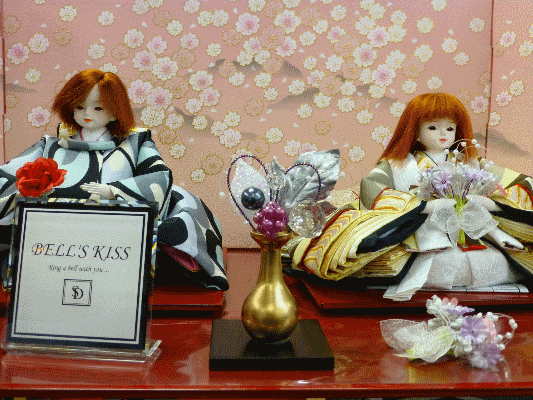 PHOTO BY MONIQUE BURNS[/caption]
PHOTO BY MONIQUE BURNS[/caption]
Sakaeya Kimono Shop – Buy or rent a traditional kimono. 3-15 Miya-cho, Omiya-ku, Saitama-shi, Saitama; 048-641-8137. www.kimono-sakaeya.com
Nagatoro Rhine Kudari – River tours in traditional Japanese boats. 489-2 Nagatoro, Nagatoro-machi, Chichibu-gun, Saitama; 0494-66-0950.
Kitain Temple – Buddhist temple with stunning gardens. 1-20-1 Kosemba-machi, Kawagoe-shi, Saitama; 350-0036, 049-222-0859. www.kawagoe.com/kitain/english

